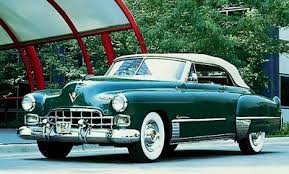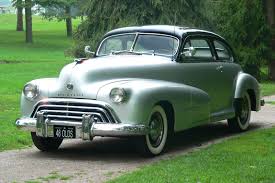-
Posts
38,189 -
Joined
-
Last visited
Content Type
Profiles
Forums
Events
Gallery
Everything posted by Ace-Garageguy
-

Murphy was right!
Ace-Garageguy replied to Oldcarfan27's topic in General Automotive Talk (Trucks and Cars)
I had an ex who was much like a sneaky sneeze. She seemed to be able to sense when I was in a critical phase of laminating a carbon part, or working through a difficult formula, or doing something equally "do not disturb". I'd told her countless times never to show up without previously clearing a time slot, so I'd know not to get involved in anything important. But she never considered anything but her own wants, and would preface her opening remarks with "I don't mean to disturb you, but..." while my vacuum-bagging would develop a leak, or the resin would go off in the pot, explosively exotherming, or innumerable other costly problems would crop up due to my inattention. It's remarkable I never strangled her. To Whom it May Concern: This is not a digression into "personal relationships". It is a continuation of the topic regarding "things happening at the worst possible time". I felt that should be clarified. -
Bottom line: the customers were courteous and considerate and realistic enough to ask IN ADVANCE if there would be any charge. They were told "NO". Any justification of the "value" received for the $25 in question IS ENTIRELY BESIDE THE POINT. And not leaving a tip only hurts the server, who was apparently NOT responsible for the decision.
-

Anyone use the thermoform technique?
Ace-Garageguy replied to philo426's topic in Tips, Tricks, and Tutorials
Bill Geary has a point, but there are some other factors to consider...which I know from personal experience. Styrene (and many other plastics) have what's known as a "glass transition temperature" or Tg. This is the temperature above which the plastic in question will be permanently deformed. For typical styrene, this occurs at about 100C, or 212F, which is boiling water. If you get your plastic that hot, any "memory" will be erased. Also, a lot of styrene sheet, tube, and strip stock is in a "non-tempered" state. That simply means it's "floppier" than it will be if you bring it to its Tg and allow it to cool again. Fastening a sheet of styrene stock to a form, as you have here, and dipping it in boiling water for just a few seconds, will usually result in the new part permanently holding the new shape. The new part will be "tempered", and not as flexible as it was before heating and cooling. I use this technique frequently for scratch-building things like trans tunnels, and getting smooth, permanent bends on sections of roll-cage material. Just be careful you don't leave it in the water too long. You don't want the kit part to warm through and deform as well. -

Murphy was right!
Ace-Garageguy replied to Oldcarfan27's topic in General Automotive Talk (Trucks and Cars)
Yup. I still have mine too, and my day-to-day printing of shop notes reflects the training (which continued at GT) as does my frequent use of old-school drafting skills rather than going always to CAD. Remember how easy it was to completely ruin a drawing during the inking process? One moment of inattention... -

Murphy was right!
Ace-Garageguy replied to Oldcarfan27's topic in General Automotive Talk (Trucks and Cars)
Bugs will never land in primer, or any color coat or clear that will get sanded anyway. They will wait for the last coat of dead-perfect glossy clear, and then, rather than have the courtesy to stay in one place, they will struggle and make tracks as far as buggly possible, usually involving their wings in the carnage as well. And rather than choosing a single panel, they will invariably land in the middle of the roof, requiring the entire model to be stripped. -
I have several threads that go into much detail as to the methods of converting chassis to an earlier period-correct representation. As I do the real ones for a living, you can trust my info. This thread shows converting the old AMT chassis to better-detailed suspension bits, but all the info as appropriate for backdating the Revell unit too. Many of us DO have multiple kits purchased just for parts, but many of the the R&M parts are copies of some kit bits, so you can go either way.
-
Some impressive machine work here, and cool sounds (though one of the offroad vehicles has fake turbo-diesel sounds dubbed in).
-
Love the concept and lines.
-
I saw a set of PE buckles and springs just a couple of days ago. Stupidly, I neglected to note where.
-

Stop resurrecting once great nameplates
Ace-Garageguy replied to HomerS's topic in The Off-Topic Lounge
Pretty sure there are some here to whom that's a vision of heaven... -
Yup.
-
I guess you missed the memo. A LOT of the early customs were built by the owners, at least in part...owners who didn't have the bucks to buy an Olds or a Caddy, but DID have the desire to invest the time and effort into developing the skills to build something that looked more expensive than the used Ford they started with. Just like hot-rodding often made old junkers into faster machines than the expensive European imports and high-end US makes of the day. These cars were built prior to the days of checkbook rods and customs, before you could buy everything out of a catalog and hire someone to build it for you. And while it's certainly true there were custom shops contracting out to do the heavy lifting in some cases, study the history and you'll find that owners often had small pieces of work done as they could afford it, driving the cars as daily transportation in the interim, or trading out unskilled labor for expertise. That's one of the reasons so many customs were seen in primer. It wasn't a me-too fashion statement like it is today. Guys actually SAVED their money to get cars painted, and had to drive in primer until the big day came. Things have certainly changed.
-
He's absolutely right. Far as the valve covers go, filing off the wire looms, filling the indented ribs, and fabbing new ribs at the bolt centers should be pretty straightforward, but I'd probably just buy a pair from Doug.
-
Chris (Spex84) has the right idea. It's also good to remember that it's not always necessary to cut the roof into sections. If the top is brought straight down over the rear pillars, the windshield pillars can often be slanted to give more rake, and eliminate the need to lengthen the roof panel entirely (this goes for widening the roof too...the pillars can be sloped to eliminate the need). With many chops, the proportions are spoiled by lengthening and widening the roof panel to align the pillars. The chop below shows the front pillars sloped to meet each other, after the roof has been brought straight down. The rear of the cab needs to be re-worked somewhat, but that's a relatively simple operation.
-
Excellent surgery on the frame. Scale engineering done right.
-
Watch your weight and stay reasonably fit. Keep learning. If you don't get hit with some difficult health problem, you can feel every bit as good in 2 decades as you do now...maybe better depending on your current fitness level.
-
Yes, some engines share the oil filler stand with the fuel pump drive. It's often a tricky bit of fiddling to get both located and still clear multiple carbs and a firewall. Sometimes fabrication is in order, so you can use a little imagination here...though it looks like you have plenty of room for this style.
-
I make a LOT of custom plumbing for rods and other things. These benders are worth every penny if you want consistent quality and have the budget. Made in sizes from 1/8" to 1/2".
-

What Did You Have for Dinner?
Ace-Garageguy replied to StevenGuthmiller's topic in The Off-Topic Lounge
Man...I'm getting hungry. I wonder what's for dinner... -
The Hirohata Merc is an icon of the Kustom Kar genre, but there are a couple others on that body I prefer, one of them being Jerry Quesnel's '50. Then there's Louis Bettancourt's '49...clean, clean, clean, and the definition of "flows". And this later car, by I don't know who... I still think the Metranga '40 Merc is about the top of the pile as far as old-school customs go though...
-

The best way to polish spray can paint
Ace-Garageguy replied to .Regal's topic in Model Building Questions and Answers
Man, that's great. Explains all the whys as well as the hows. This ought to be required reading for anyone getting into the hobby. Sure would save a lot of grief. -

The best way to polish spray can paint
Ace-Garageguy replied to .Regal's topic in Model Building Questions and Answers
It can be tricky with spraybombs, but yes, I generally shoot both lower edges, both ends, and then shoot one side, working over the top to the other side.


